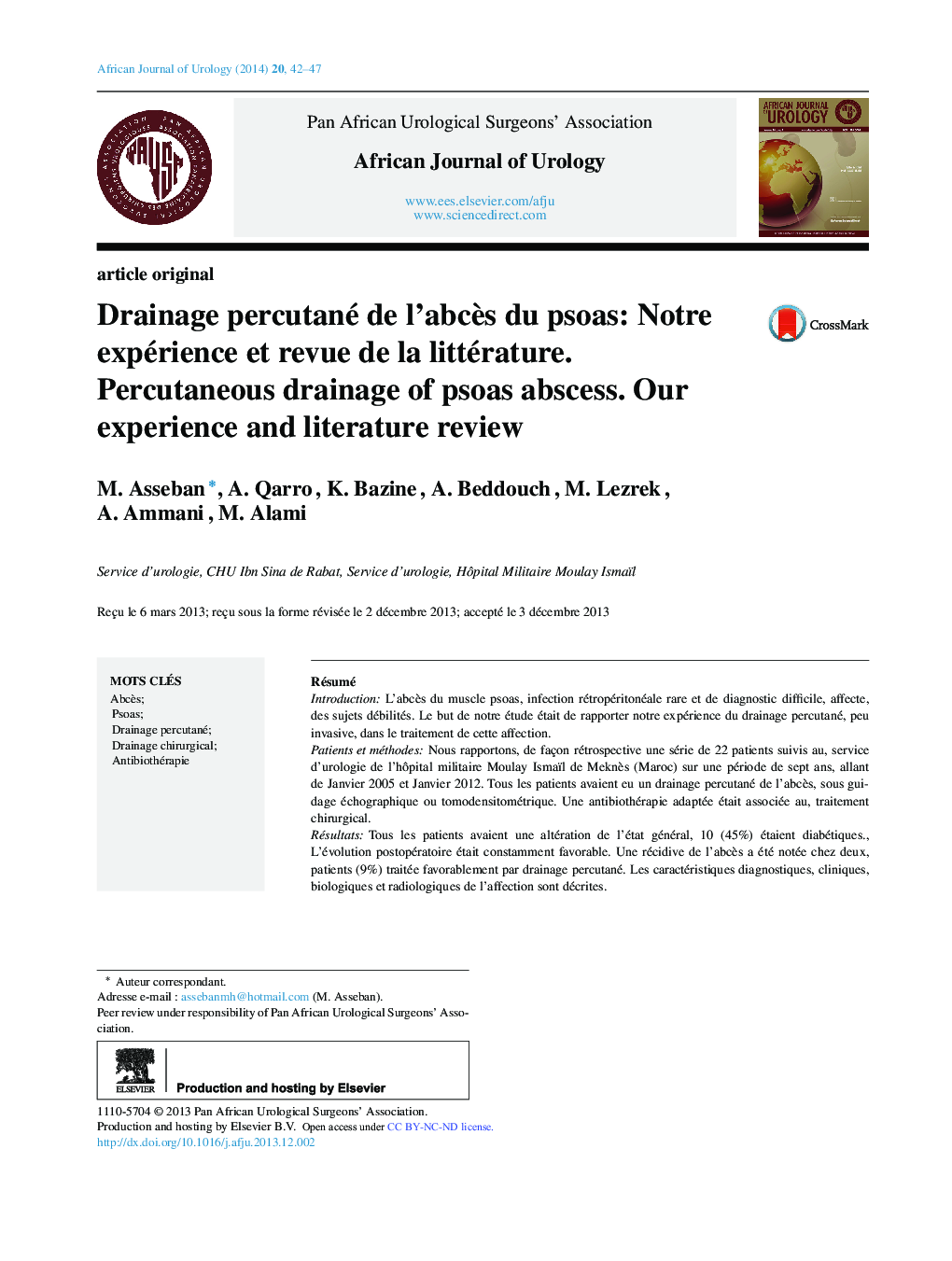| Article ID | Journal | Published Year | Pages | File Type |
|---|---|---|---|---|
| 4267693 | African Journal of Urology | 2014 | 6 Pages |
RésuméIntroductionL’abcès du muscle psoas, infection rétropéritonéale rare et de diagnostic difficile, affecte, des sujets débilités. Le but de notre étude était de rapporter notre expérience du drainage percutané, peu invasive, dans le traitement de cette affection.Patients et méthodesNous rapportons, de façon rétrospective une série de 22 patients suivis au, service d’urologie de l’hôpital militaire Moulay Ismaïl de Meknès (Maroc) sur une période de sept ans, allant de Janvier 2005 et Janvier 2012. Tous les patients avaient eu un drainage percutané de l’abcès, sous guidage échographique ou tomodensitométrique. Une antibiothérapie adaptée était associée au, traitement chirurgical.RésultatsTous les patients avaient une altération de l’état général, 10 (45%) étaient diabétiques., L’évolution postopératoire était constamment favorable. Une récidive de l’abcès a été notée chez deux, patients (9%) traitée favorablement par drainage percutané. Les caractéristiques diagnostiques, cliniques, biologiques et radiologiques de l’affection sont décrites.ConclusionLe drainage percutané est une technique facile et fiable. Peu invasive, et pouvant être, répétée en cas de nécessité, elle convient aux patients généralement débilités.
IntroductionPsoas abscess is a rare retroperitoneal infection and is often difficult to diagnose. It affects debilitated subjects. The aim of our study is to report our experience with percutaneous minimally-invasive drainage in the treatment of this condition.Patients and methodsWe report on a retrospective series of 22 patients followed at the Urology service, Military Hospital Moulay Ismail in Meknes (Morocco) over a period of seven years from January 2005 to January 2012. All patients underwent percutaneous drainage of the abscess under guidance of ultrasound or CT, together with appropriate antibiotics.ResultsAll patients had constitutional symptoms, 10 (45%) were diabetic. The postoperative course was consistently favorable. Recurrent abscess was noted in two patients (9%) and was favorably treated by percutaneous drainage. Diagnostic, clinical, biological and radiological characteristics of the disease are described.ConclusionPercutaneous drainage is an easy and reliable technique. It is minimally invasive, can be repeated if necessary, and is convenient in generally debilitated patients.
